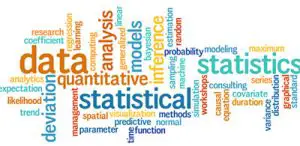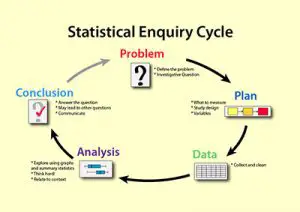Understanding Statistical Questions – Statistical Questions Examples
One of the basic concepts that you need to understand where you are dealing with statistics is that you are basically studying variability. The reality is that when you ask a question, the answer will be given by data that varies. And this is when it is important to make the clear distinction between statistical questions and non-statistical questions.

Simply put, a statistical question can only be answered when you collect data that varies. While we understand that some people may not have any problems understanding the concept, the truth is that it is always better to present examples. So, we decided to show you a couple of statistical questions examples so that you can fully understand the difference between statistical questions and non-statistical questions.
Discover the best free statistics calculators.
Let’s take a look at the following questions and see which ones are statistical questions examples and which ones are non-statistical questions examples.
#1: How old is your dog?

This is a non-statistical question. Why? The question can be answered by a single number and by collecting data that will vary.
#2: How many days are in March?
Again, this is a non-statistical question. The number of days that a month has doesn’t vary throughout time. In addition, all you need to do is to count the days that March has to get the answer.
#3: How many bricks are in this wall?
This is another question that is clearly non-statistical. After all, it is asking how many bricks a particular wall has and all you need to do is to count the number of bricks that it includes. The answer to the question is a single number and you won’t answer the question by collecting data that varies.
#4: What is the proportion of students at your school that like watermelons?

This is the first statistical question example that we have so far. In order to discover the proportion of the students who like watermelon at your school, you need to collect data first. And this data will vary since there will be students who like watermelon and others who hate it.
Take a look at a reliable tool for chi square test online.
#5: Do you like watermelons?
A similar question to the previous one but, in this case, is a non-statistical question. The truth is that you either like or dislike watermelons. It is a single answer that won’t involve the collection of data.
#6: What was the temperature at noon today at City Hall?
This question can cause some doubts. However, you just need to look at how it is formulated so that you can discover if this is one of the statistical questions examples or not.

If you take a closer look at the question, it is asking the exact temperature at a specific time, in a specific place. So, there is no variability in the results and you don’t need to do any data collection. However, if the question was “what will the temperature be at noon at City Hall tomorrow?”, this was already a statistical question. After all, you needed to collect data that would vary depending on the previous temperatures, humidity, among others.
#7: On average, how old are the dogs that live on this street?
This is another statistical question example. In order to answer this question, you will need to collect the data and the data will vary. Not all dogs are the same age.